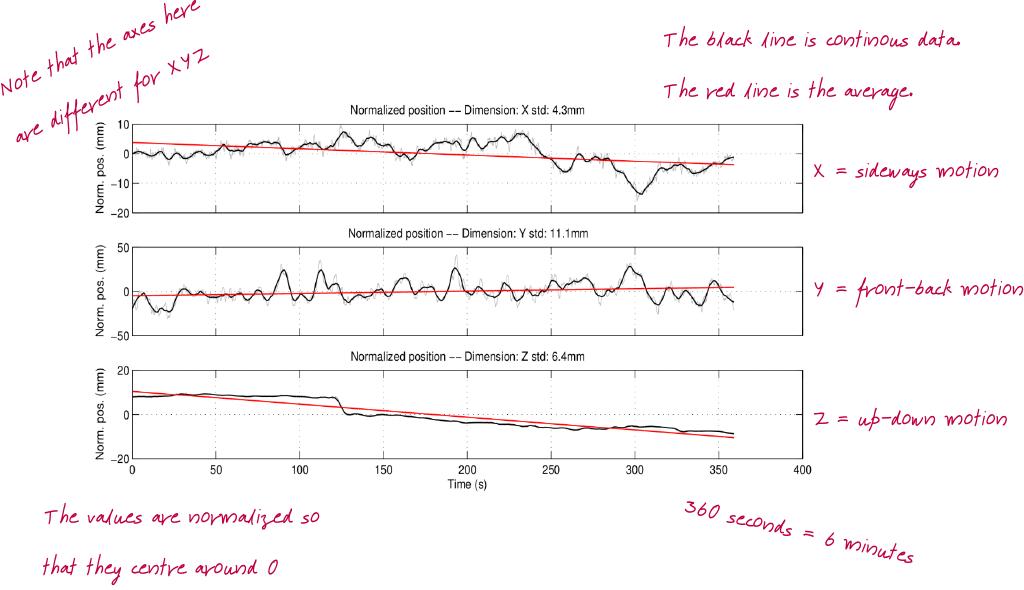I wrote up the final report on the project MICRO - Human Bodily Micromotion in Music Perception and Interaction before Christmas. Now I finally got around to wrapping up the project pages. With the touch of a button, the project’s web page now says “completed”. But even though the project is formally over, its results will live on.
Aims and objectives
The MICRO project sought to investigate the close relationships between musical sound and human bodily micromotion. Micromotion is here used to describe the smallest motion that we can produce and experience, typically at a rate lower than 10 mm/s.

The last decades have seen an increased focus on the role of the human body in both the performance and the perception of music. Up to now, however, the micro-level of these experiences has received little attention.
The main objective of MICRO was broken down into three secondary objectives:
- Define a set of sub-categories of music-related micromotion.
- Understand more about how musical sound influences the micromotion of perceivers and which musical features (such as melody, harmony, rhythm, timbre, loudness, spatialization) come into play.
- Develop conceptual models for controlling sound through micromotion, and develop prototypes of interactive music systems based on these models.
Results
The project completed most of its planned activities and several more:
- The scientific results include many insights about human music-related micromotion. Results have been presented in one doctoral dissertation, two master theses, several journal papers, and at numerous conferences. As hypothesized, music influences human micromotion. This has been verified with different types of music in all the collected datasets. We have also found that music with a regular and strong beat, particularly electronic dance music, leads to more motion. Our data also supports the idea that music with a pulse of around 120 beats per minute is more motion-inducing than music with slower or faster tempi. In addition, we found that people generally moved more when listening with headphones. Towards the end of the project, we began studying whether there are individual differences. One study found that people who score high on empathic concern move more to music than others. This aligns with findings from recent studies of larger-scale music-related body motion.
- Data collected from the project has been released openly in Oslo Standstill Database. The database contains data from all Championships of Standstill, the Headphones-Speakers study, and from the Sverm project that preceded MICRO.
- Software developed during the project has been made openly available. This includes various analysis scrips implemented in Jupyter Notebooks. Several of the developed software modules have been wrapped up in the Musical Gestures Toolbox for Python.
- The scientific results have inspired a series of artistic explorations, including several installations and performances with the Self-playing Guitars, Oslo Muscle Band, and the Micromotion Apps.
- The project and its results have been featured in many media appearances, including a number of newspaper stories and several times on national TV and radio.
Open Research
MICRO has been an Open Research flagship project. This includes making the entire project as open as possible but as closed as necessary. The project shares publications, data, source code, application, and other parts of the research process openly.
Summing up
I am very happy about the outcomes of the MICRO project. This is largely thanks to the fantastic team, particularly postdoctoral fellow Victor Gonzalez Sanchez and doctoral fellow Agata Zelechowska.
Results from the Sverm project inspired the MICRO project, and many lines of thought will continue in my new AMBIENT project. I am looking forward to researching unconscious and involuntary micromotion in the years to come.